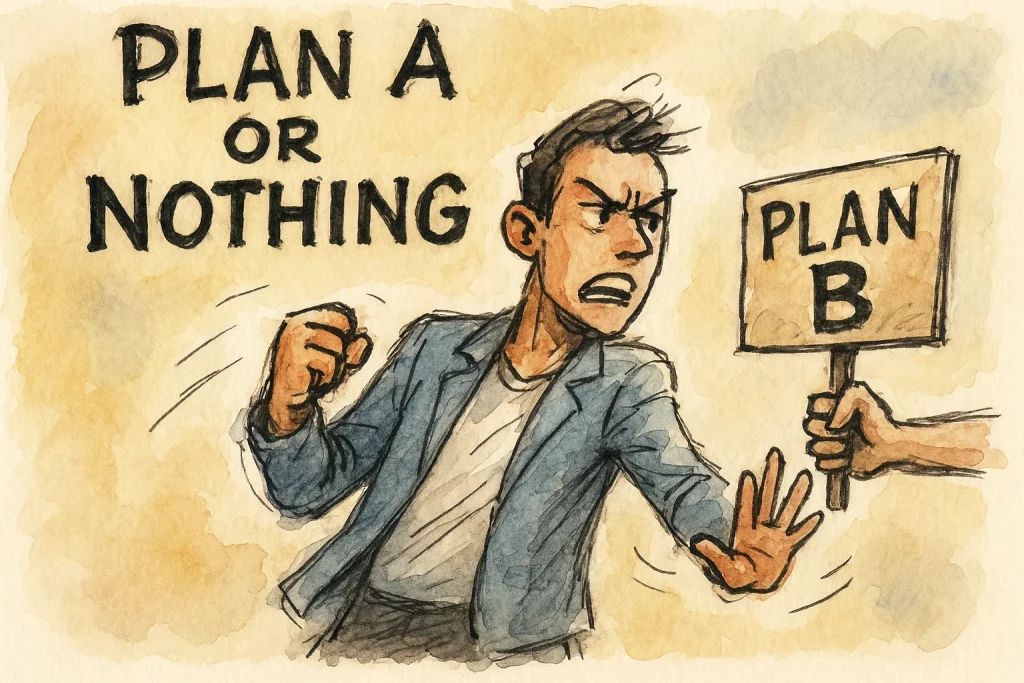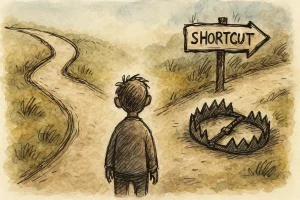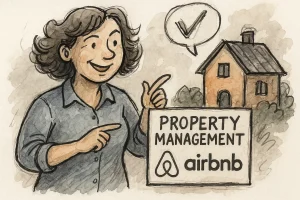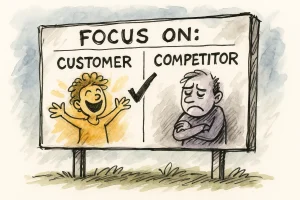
“Always have a Plan B.” This advice sounds prudent, but it might be exactly what distances you from extraordinary results. By keeping an alternative path, part of your mental energy is already calculating the escape route, rather than focusing on the flawless execution of your main goal. Those who carry a Plan B are not 100% committed to Plan A.
What the “Plan B” steals from you:
- Urgency: Tight deadlines drive creativity. If there is a parallel exit, the pressure decreases, and you start accepting delays as something “manageable.”
- Cognitive focus: Every extra scenario consumes working memory. Making strategic decisions while updating your “backup” dilutes attention.
- Emotional commitment: Part of your brain is already mourning failure before it happens, as it knows where to land. This hesitation weakens the conquering mindset.
Three examples of “Plan A or nothing” in action:
- Bootstrap Entrepreneurs: With no venture capital, they survive by selling or close shop. This reality creates lean solutions aiming for cash flow generation from day one.
- Olympic Athletes: There are no “parallel games.” It’s either securing a spot or watching from the TV. Many only achieve gold because they never planned for a middle-ground career.
- Independent Artists: By turning down “temporary” jobs that become permanent, they dive into their art until it becomes their income — or they completely change paths.
How to adopt the Plan A philosophy?
- Define a non-negotiable result: Instead of “I want to launch an app,” establish “I will launch version X 1.0 in three months and get 100 paying users.”
- Cut safety nets: Money reserved to “fall back” becomes your marketing or prototyping budget.
- Communicate your commitment: Sharing goals with partners and clients creates social accountability — failing publicly hurts, which encourages discipline.
- Do reverse engineering: Start with the goal and break it down into micro-steps daily. Without a step-by-step, Plan A becomes a dream… not a strategy.
- Evaluate, but don’t revise prematurely: Adjustments are allowed, but within the scope of Plan A. Swapping goals for comfort brings you back to square one.
But… “What happens if everything fails?” — they ask. It’s worth remembering: “Plan A or nothing” doesn’t mean blind irresponsibility. It means committing fully within the resources and calculated risks allowed. If an unfeasible scenario arises, close it, learn, and move on to a new Plan A — not a watered-down version of the old one.
Innovation, leadership, or transformation requires total conviction. When there’s a comfortable alternative, the main goal becomes a preference, not a priority. If you really want to build something memorable, throw away Plan B. The discomfort of not having a safety net is, ironically, the anchor that keeps you steady on the only path capable of taking you beyond the ordinary: “Plan A or nothing.”
That’s it.





